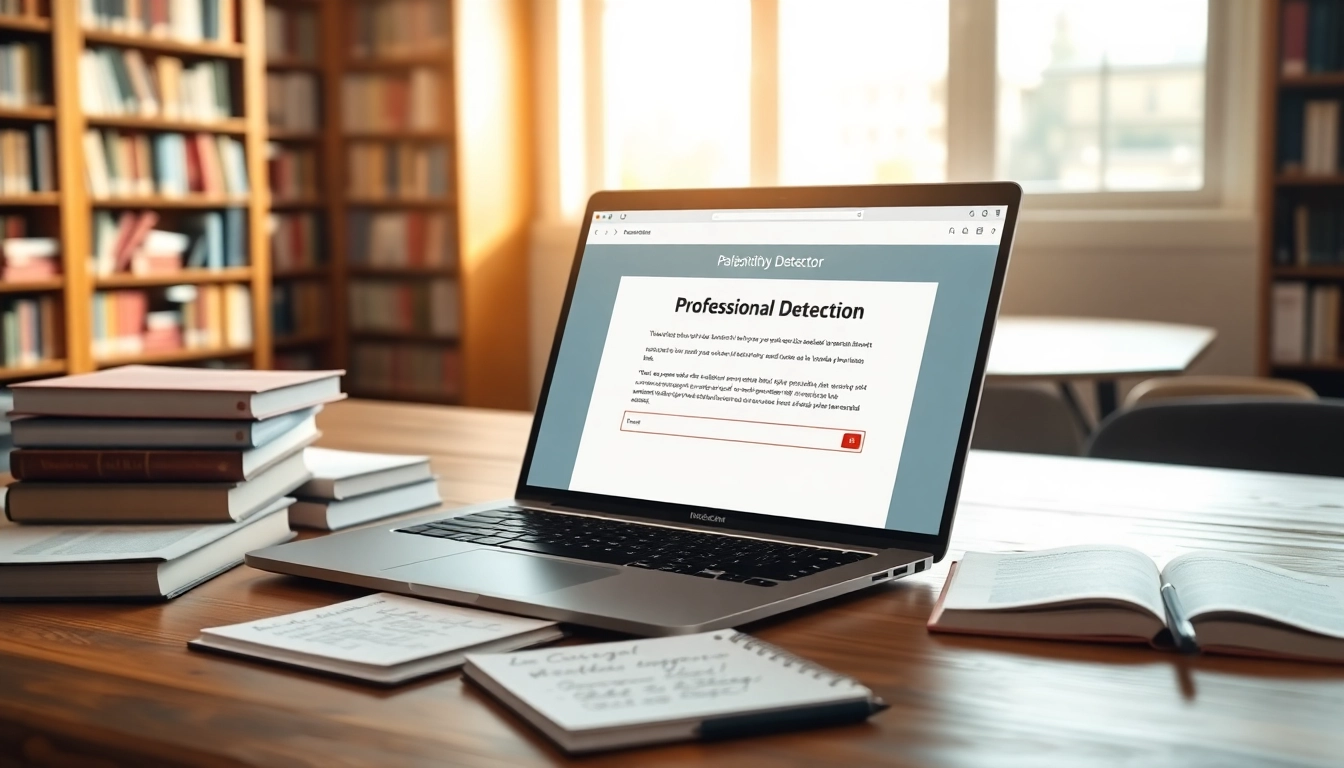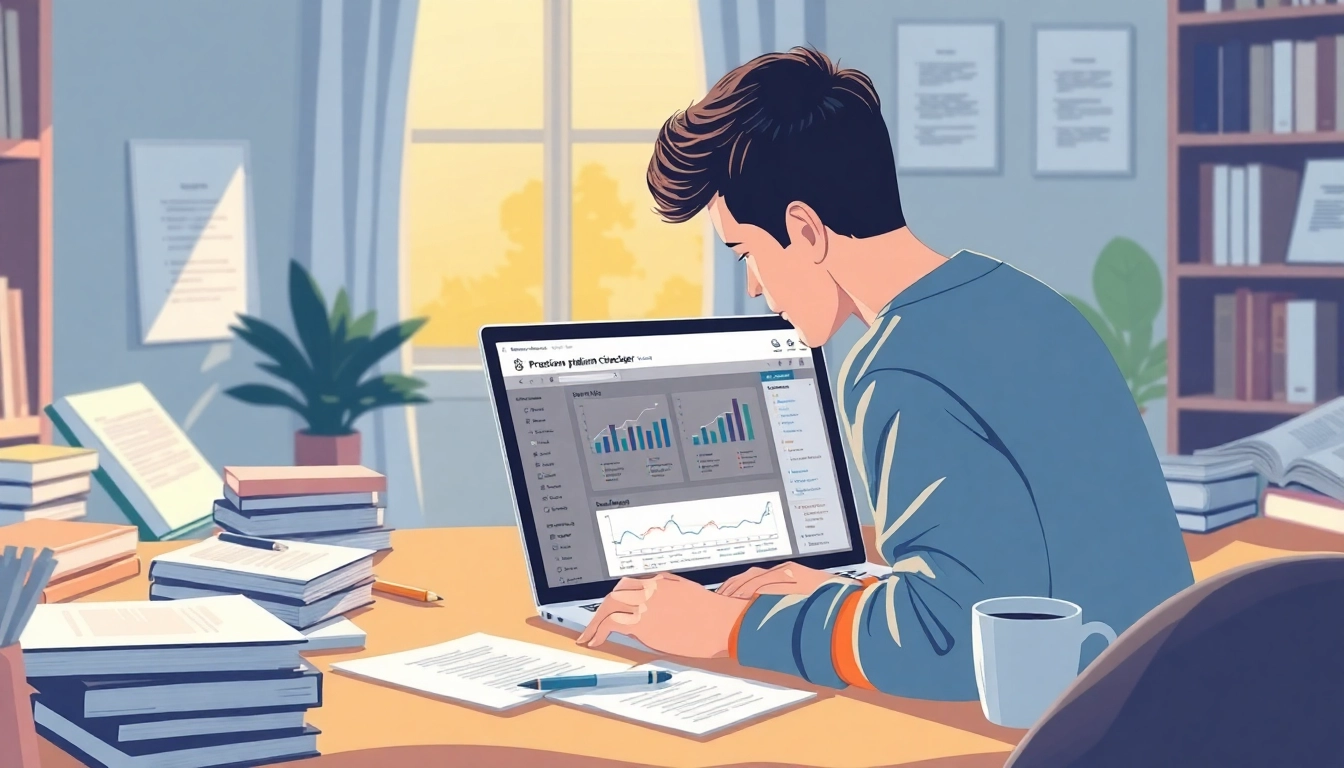Understanding Plagiarism and Its Consequences
Plagiarism is a pervasive issue across educational institutions and workplaces, where the originality of thoughts and written content is paramount. At its core, plagiarism involves the unauthorized use or representation of another person’s work as one’s own. The advent of digital resources has heightened this concern, as content from various sources is now easily accessible. This makes the need for effective tools to detect and prevent plagiarism, such as a plagiarism detector, increasingly critical in maintaining academic integrity and professional authenticity.
The Different Types of Plagiarism
Plagiarism can manifest in several forms, each with distinct characteristics and implications:
- Direct Plagiarism: This occurs when an individual copies someone else’s work verbatim without attribution.
- Self-Plagiarism: This involves reusing one’s previous work in new assignments without proper citation, which can be a significant concern in academia.
- Paraphrasing Plagiarism: Even if the wording is changed, failing to credit the original source still constitutes plagiarism.
- Mosaic Plagiarism: This occurs when a writer intersperses their own text with copied phrases from original sources without proper citation.
- Accidental Plagiarism: This can happen when an individual unintentionally fails to cite sources or misquotes their original context.
Why Plagiarism is Harmful
The consequences of plagiarism are vast and can significantly affect individuals’ academic and professional careers. It undermines the value of genuine work and learning, erodes trust among peers, and can lead to severe disciplinary actions, such as expulsion from educational institutions or termination from jobs. Moreover, plagiarism can tarnish reputations, leading to long-lasting effects that impact future opportunities.
Legal Implications of Plagiarism
Beyond academic penalties, plagiarism can have serious legal repercussions. Copyright laws protect original works, and using someone else’s intellectual property without authorization can lead to lawsuits, financial penalties, and damage to one’s professional standing. Understanding the legal ramifications is crucial for writers, students, and professionals alike, emphasizing the importance of utilizing plagiarism detection tools to uphold integrity.
How a Plagiarism Detector Works
Plagiarism detectors are sophisticated tools designed to identify similarities between submitted texts and vast databases of existing work. These systems leverage various algorithms and technologies to ensure accuracy and reliability.
Overview of Detection Algorithms
Modern plagiarism detection tools typically use a combination of algorithms to identify copied content. These include:
- String Matching Algorithms: These search for exact matches between the submitted text and database entries.
- Fingerprinting: This method entails creating a unique identifier for segments of text to find overlaps with other sources.
- Semantic Analysis: Advanced tools employ natural language processing (NLP) to assess the context and meaning behind the text, extending beyond mere word-for-word comparisons to more sophisticated content analysis.
Common Features of Plagiarism Detectors
When evaluating plagiarism detection tools, consider the following essential features:
- Database Size: A wider database significantly increases detection capabilities, covering various documents and web pages.
- Multi-format Support: Good detectors can analyze multiple file formats, including .doc, .pdf, and .txt.
- Detailed Reporting: The tool should provide comprehensive reports detailing the percentage of matched content and the sources it matches against.
- User-Friendly Interface: An intuitive and straightforward interface enhances user experience and efficiency.
Understanding Percentage Reports
Most plagiarism detectors generate a percentage that indicates the extent of overlapping content. This metric can help users gauge potential plagiarism issues, although it is essential to interpret these percentages critically. A high percentage might signal a serious plagiarism concern, but not all matches indicate malicious intent—common phrases or widely-used expressions may also contribute to the total. Thus, users should review the report contextually.
Choosing the Right Plagiarism Detector
Selecting the appropriate plagiarism detection tool requires careful consideration of various factors to meet your specific needs effectively.
Comparing Free vs. Paid Tools
While numerous free plagiarism checkers exist, paid options often provide more advanced features and greater accuracy:
- Free Tools: These can be useful for quick checks but may lack depth in analysis and databases.
- Paid Tools: These typically offer extensive databases, advanced algorithms, and features such as real-time integration into writing platforms, making them more suitable for serious academic or professional use.
User Requirements and Preferences
All users come with different preferences based on their specific needs. Students might prioritize cost-effectiveness and user-friendliness, while academic institutions may require robust database access and integration capabilities. Professionals might look for business-oriented features such as multi-user licenses and enhanced reporting.
Key Features to Look For
When choosing a plagiarism detector, prioritize these features:
- Accuracy: Ensure that the tool has a reputation for minimal false positives and negatives.
- Integration Capability: Many professionals benefit from tools that integrate with word processors or learning management systems.
- Customer Support: Reliable support can help resolve issues swiftly, offering peace of mind.
- User Reviews: Check user testimonials or reviews to gauge overall satisfaction and quality.
Integrating Plagiarism Detection into Your Workflow
Incorporating plagiarism detection into daily writing practices can enhance originality while fostering ethical standards.
Effective Use in Academic Settings
Educational institutions can leverage plagiarism detectors in various ways, such as:
- Utilizing them before submission deadlines to encourage students to check their work.
- Incorporating them as part of the curriculum to educate students on the importance of academic integrity.
- Employing them as a standard compliance requirement for research papers and thesis submissions.
Implementing for Professional Writing
In professional environments, plagiarism detection can prevent potential reputational damage:
- Content creators can incorporate tools into their editorial processes to ensure all published materials maintain high originality standards.
- Businesses can utilize plagiarism detectors to vet client submissions and internal reports, thus safeguarding their intellectual property.
Best Practices for Maintaining Originality
To uphold originality, consider adopting the following best practices:
- Embrace thorough research and proper citation across all works.
- Encourage collaborative discussions on content creation to develop unique perspectives.
- Utilize plagiarism detection tools as a safeguard rather than a substitute for ethical writing practices.
Future Trends in Plagiarism Detection Technology
The landscape of plagiarism detection is constantly evolving, especially with advances in technology, which shape its effectiveness and accessibility.
Advances in AI and Machine Learning
Artificial Intelligence (AI) and machine learning are poised to revolutionize plagiarism detection’s accuracy and functionality. These technologies can:
- Enhance contextual awareness, reducing false positives by understanding content nuance and intent.
- Enable adaptive learning models, allowing tools to improve detection capabilities over time, learning from user interactions.
New Features on the Horizon
As competition among providers intensifies, elements like:
- Integration with writing platforms for real-time detection and feedback.
- Collaboration features that allow multiple users to access reports and improve collective writing efforts.
- Mobile applications that facilitate plagiarism checks on-the-go can expand usability.
The Role of Educational Institutions
Educational institutions must play a proactive role while integrating these advanced tools. They can:
- Train students and faculty on best practices for using plagiarism detectors responsibly.
- Promote awareness of the legal implications of plagiarism as part of an effort to cultivate an environment of respect for intellectual property.
- Encourage transparency and the ethical use of content through policy guidelines governing original work submission.



